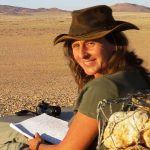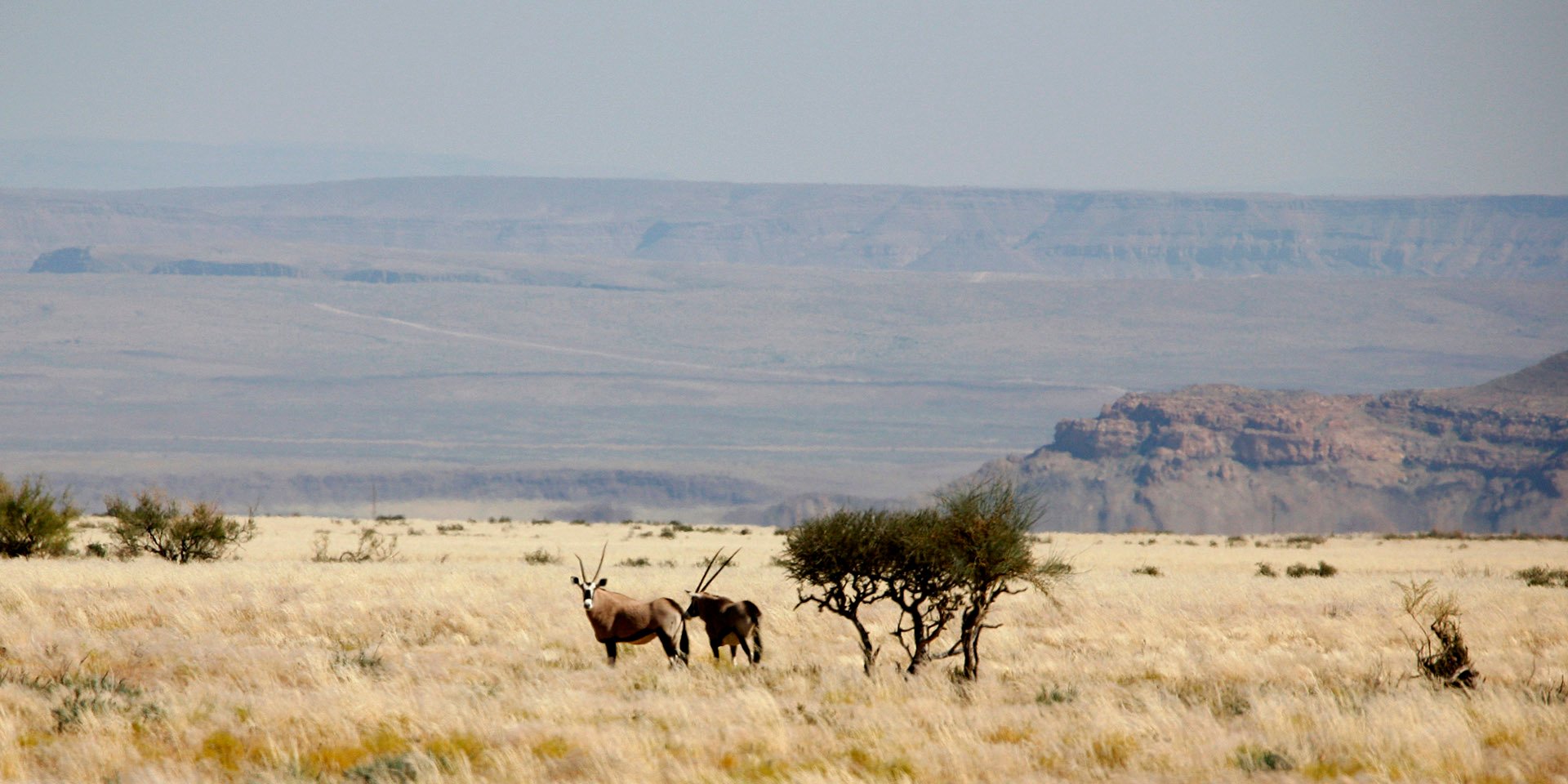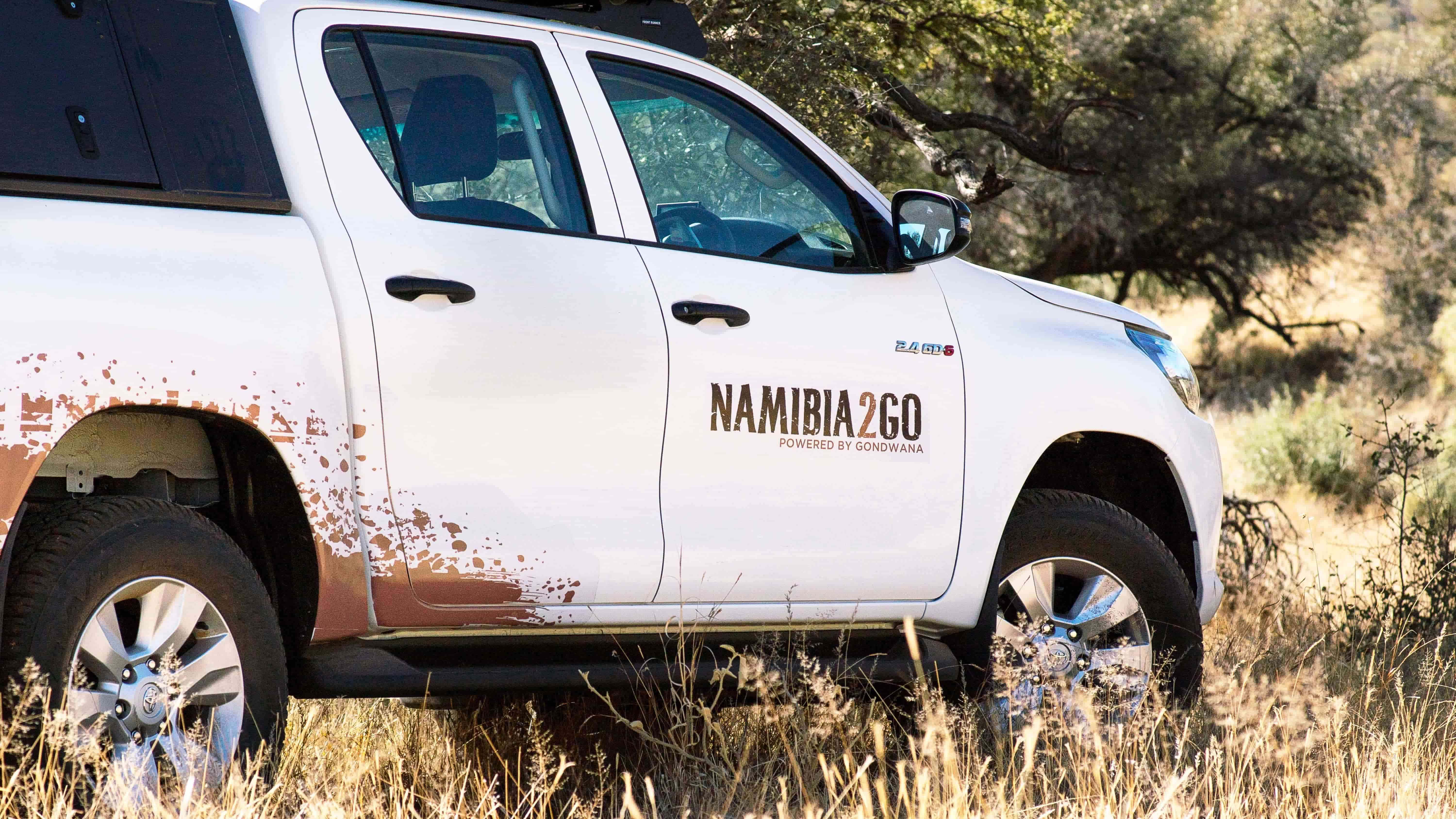I strolled over to the living museum, passing water-lilies growing in the floodplains and being heralded by several grey louries or ‘go away birds’, so called because they alert wildlife to the presence of hunters. “Kwe, kweeeee,” they squawked as I passed.
A living museum is an ingenious concept, introduced to Namibia by the Living Culture Foundation Namibia (LCFN), where ethnic groups demonstrate their traditional way of life. It serves to provide employment for the group while reinforcing cultural traditions and values that are fast dying out. The living museums include the Ju/’Hoansi-San in Grashoek, just north of Grootfontein, the Damara near Twyfelfontein, the Mafwe in the Caprivi and the Mbunza in the Kavango. The Living Museum of the Mbunza just happened to be a conveniently short walk from Hakusembe Lodge.
Entering the reception hut, I was amazed to see an organised and neat assemblage of books and papers a teacher would be proud of. And the rest of the tour through the village, as I was introduced to Mbunza traditions and the friendly group, was just as well organised. A short visit was extended into hours and lunch was completely forgotten as I became involved in the interesting Kavango culture. They showed me crafts such as moulding clay animals, carving a wato, weaving baskets and mats, and how to play the finger-piano and the unusual mouth-bow used to attract animals like springbok and duiker. The gaps in the practical demonstrations were filled in with stories, for eg. a husband-to-be was required to weave the mat he and his wife would first sleep on together and if a woman couldn’t weave a basket she wasn’t seen as a suitable marriage partner.
Food was next: the sour milk, favoured by African groups, and traditionally thickened in a calabash by the Mbunza; mangetti nuts (the steaming fruit was taken off the fire for me to try); and the staple mahangu (pearl millet), which is pounded in a wooden mortar.
One of the most popular games in Africa is ‘wera ‘, called by different names in different places. You can hopscotch from country to country and see boards made from different materials (here, it was dug into the sand) and the game played with anything from mangetti nuts (in this case – traditionally representing cattle), marbles, seeds, coins or even bottle caps. I was told that a chief would make his daughter’s suitors play the game to ensure she would have an intelligent husband.
Before song and dance and final farewells, I heard the story of the museum’s inception and was shown medicinal herbs, blacksmith skills and traditional fishing methods so important to a culture dependent on the river. Shining eyes and wide smiles accompanied drumming, the swishing of reed skirts, dancing, singing and even ululating. I was mesmerised and then supremely humbled as the last song was dedicated to me, to thank me and wish me well on my journey.
Ron Swilling is a freelance writer, based in Cape Town, writing for Namibian and South African publications. She is a regular contributor to Gondwana’s History and Stamps&Stories columns and documented the information on the Wild Horses in the Namib Desert for Mannfred Goldbeck and Telané Greyling. She invites you to ‘Follow her footsteps’ on her journey from the Orange River, exploring the Gondwana routes through the intriguing country of Namibia.






SUBMIT YOUR COMMENT